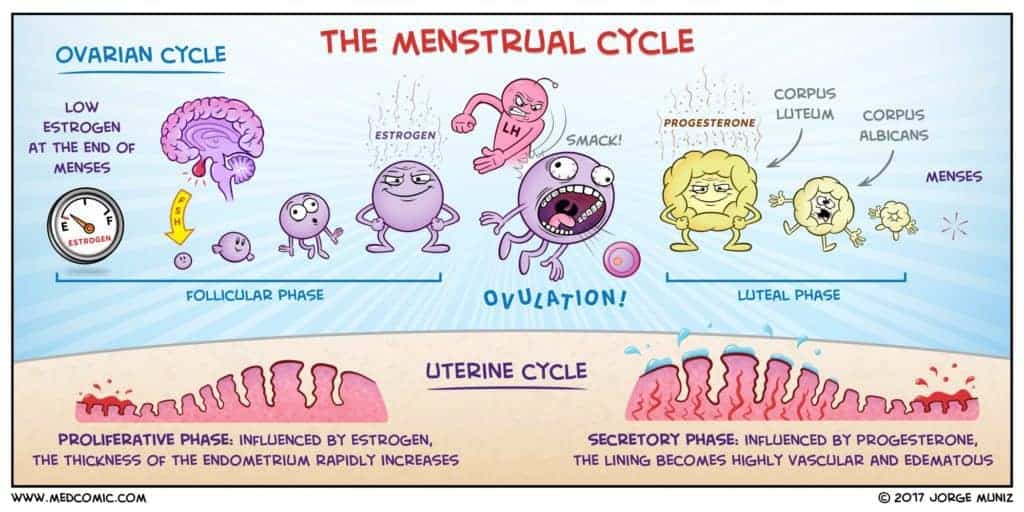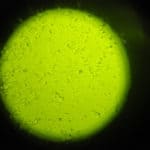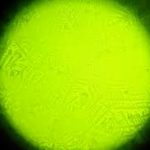![]() One of the hardest thing about infertility is not knowing when you are fertile.
One of the hardest thing about infertility is not knowing when you are fertile.
Natural Fertility Awareness (there are variations known as Natural Family Planning, Rhythm Method, or Symptothermal Method) is a reliable way of identifying your fertile window, so you can time intercourse well, so you can maximize your chances of getting pregnant.
Please read: This information is provided for educational purposes only and is not intended to treat, diagnose or prevent any disease. We encourage you to make your own health care decisions in partnership with a qualified health care professional.
This post contains affiliate links, this means at no extra cost to you, we make a commission from sales. Please read
our Disclosure Statement
Fertility Awareness Method: Tracking Your Fertility Cycle article includes:
What is the Natural Fertility Awareness method?
Types of Natural Family Planning methods
How is the Symptothermal Method different to Calender Method?
Can you use Natural Family Planning to get pregnant?
How does the fertility awareness work?
What does it look like when your ovulating?
How do you know if you are fertile?
How do I calculate my ovulation day?
How many days out of the month are you fertile?
How does the Natural Family Planning method help with infertility?
Using Fertility Awareness as Birth Control: How can we avoid pregnancy naturally
What is the Natural Fertility Awareness method?
The Fertility Awareness Method is a way to predict fertile and infertile times in your cycle. It is based on you body’s signs, which change during each menstrual cycle in response to the hormones that cause ovulation.
The days nearest to ovulation are your most fertile days — when you’re most likely to get pregnant. So people use Fertility Awareness Method to prevent pregnancy by avoiding sex or using another birth control method (like condoms) on those “unsafe,” fertile days.
When you are trying to get pregnant, these are the best days to try.
The natural fertility awareness has been used in different forms by Catholic families for a long time, as other options for contraceptives are strictly forbidden.
What are the Different Types of Natural Family Planning Methods
There are a few different Fertility Awareness Methods that help you track your fertility signs. You can use 1 or more of these methods to predict when you’ll ovulate, the best option is to track the first 3 together.
- The Temperature Method: you take your temperature in the morning every day before you get out of bed with a BBT thermometer. There is a rise in temperature after ovulation occurs. By taking your temperature first thing every morning, and graphing the results, you can often tell if you’ve ovulated.
- The Cervical Mucus Method: you check your cervical mucus (vaginal discharge) every day and watch for changes. When you’re most fertile, there is more mucus, and it feels wet and slippery (like raw egg white). After ovulation, there is less mucus and it’s sticky, which blocks sperm from entering the uterus.
- The Calendar Method: you chart your menstrual cycle on a calendar to look for patterns (there may not be any!)
- Sympto-Thermal Method: uses a combination of various methods that identify symptoms of ovulation. These include the mucus method, basal body temperature, cervix changes, and other symptoms such as breast tenderness, abdominal heaviness, slight lower abdominal pain, or slight bleeding (spotting). This method may work better for women with irregular or less distinct mucus changes.
The Sympto-thermal method and it is the best and most reliable option. When used as a contraceptive in 100 couples over 1 year, following it perfectly, less than 1 couple will become pregnant (1), this is pretty similar statistics to the pill.

How is the Symptothermal Method Different to the Calendar Method?
The calendar method is also known as the rhythm method and is the oldest formal systems to use periodic abstinence to prevent pregnancy. The problem is you cannot use past cycles to predict the future.
All it takes is some illness, stress or just very irregular cycles and it doesn’t work any more.
The sympto-thermal method of fertility awareness, unlike the calendar method, does not attempt to predict the fertile phase.
Instead, it requires daily observation of two simple fertility signs – basal body temperature and cervical fluid – to accurately detect the fertile phase.
The great thing is that it can even be used by women with highly irregular cycles caused by Polycystic Ovarian Syndrome (PCOS), which is a huge no-no for the calendar method.
Try our 14 day Health Yourself, fertility boosting challenge!
The sympto-thermal method is a great tool for women who are trying to get pregnant. Not only can it greatly speed up the process of getting pregnant, but it can also help in the detection of reproductive disorders that may lead to difficulty conceiving so that you can correct them.
How does Natural Fertility Awareness work?
There are a few basic principals that FAM relies on:
- An egg is only released once in each menstrual cycle.
- The egg lives 12 to 24 hours.
- Sperm can live up to five to six days in the uterus, and are able to fertilize an egg during this time.
- Your body has specific signs and symptoms that suggest ovulation is about to and has already occurred.
- Sperm need cervical fluid to survive, swim, and be effectively “washed” and capable of fertilizing an egg. It can live in fertile cervical fluid for up to 5 days, but they die quickly in the natural acidic vaginal environment.
- Cervical fluid builds up in response to estrogen, which is released by the developing sacs that hold the egg. This is happening in the days leading up to ovulation.
- Progesterone is released from the corpus luteum, which is what the sac that held the egg turns into after ovulation has taken place. This raises the body temperature, dries cervical fluid, and inhibits a second ovulation.
This means that a woman is fertile for as long as four days before ovulation and one day after ovulation, a total of seven days of fertility in her cycle each month.
Natural Fertility Awareness helps women to identify these days and make decisions on abstinence, use barrier methods, or to time sex to achieve pregnancy, depending on outcome desired.

How to Check your Basal Body Temperature
Every morning before you get out of bed you need to take your temperature with a BBT thermometer. These are accurate to .1F or .01C.
You need to not drink anything or get out of bed before hand, and ideally you would take your temperature at the same time each day.
At the beginning of your cycle, basal body temperature remains fairly consistent and averages between 97.2 and 97.6 degrees Fahrenheit.
As you get closer to ovulation, there’s a slight dip in basal body temperature followed by a sharp increase, typically of about 0.4 to 1.0 degrees, just after ovulation.
One of the ways to determine when and if ovulation happened is to track your basal body temperature over a series of months. I use Fertility Friend to chart – it has a free option and it automatically detects your ovulation for you.
Or if you prefer you can grab our BBT chart pdf here.
You may notice a slight dip in temperature the day before you ovulate. This is caused by an extra estrogen surge, it also causes the extra cervical mucus that you will notice.
Ovulation is confirmed once you have 3 temperatures higher than the previous 6.
What does it look like when you are Ovulating?
The signs of ovulation in a woman vary from person to person. You may notice all, some or none of the following:
- Cervical mucus changes
- Heightened sense of smell/ aversions
- Food cravings
- Headache/migraine
- Breast soreness or tenderness
- Mild pelvic or lower abdominal pain or back ache
- Light spotting or discharge – pink or brown
- Libido changes – increased sex drive
- Changes in the cervix- higher, softer and more open
How do you know if you are Fertile?
As you near ovulation, your body produces more estrogen, causing cervical mucus to become stretchy and clear, like egg white. It will stretch at least one inch and up to 5 inches before breaking.
This helps sperm swim to the egg that’s released during ovulation. Cervical mucus changes happen in most women but you have to know what you’re looking for.
The amount of cervical mucus and what it looks and feels like varies from woman to woman. To test it for ovulation, insert a clean finger into your vagina, remove some of the mucus and then stretch out the secretion between your thumb and finger.
If it’s clear and stretchy or very wet and slippery, that’s a good sign that you’re in a fertile phase. Some women never get eggwhite/clear fluid, sometimes creamy like a thin lotion is as fertile as you get.
If this is you, you will probably benefit from using some sperm-friendly lubricant to help the spermies on their journey. Pre-seed and Conceive Plus are two great options. A good quality fertility diet will increase the quality and quantity of your cervical mucus if it is lacking.
The most important thing to remember about cervical fluid is that it will become progressively wetter and more slippery leading up to ovulation; so paying close attention to your body’s pattern is vital.
If you want to know more about all of this, I really recommend that you read Toni Weschler’s book Taking Charge of Your Fertility it is the sort of reference guide that is worth having on hand, and it goes in to great detail, with images and examples.
It totally changed my approach to getting pregnant and contraception.
How do I Calculate my Ovulation day?
Calculating your ovulation day ahead of time is only helpful if you are quite consistently regular in your cycle.
Much of what you read will tell you that you ovulate 14 days before your next period, or worse, on (and only on) day 14. Sadly this is bad mis-information.
In a normal healthy cycle the luteal phase (from when you ovulate to when your period starts) will be the same from month to month within a day or so. But from woman to woman it can vary significantly!
Some women’s luteal phase is only 8 or 9 days long. If this is you, it may well be the reason you are not getting pregnant. The best way to discover this is by charting your temperature consistently for a few months.
An embryo needs more than 8 days to implant and start secreting the pregnancy hormone HCG to prevent your period from arriving and flushing the embryo away.
If your luteal phase is this short (ideally it would be 13-15 days) you can start taking Vitex and Vitamin B6. Suggested usage is 50mg up to 100mg of B6 daily. Make sure to use vitamin B6 in conjunction with a B vitamin complex or multivitamin to avoid causing imbalances.
Other women have a luteal phase of 18 days or more. This is also, believe it or not, a ![]() progesterone insufficiency issue, the progesterone levels are not rising high enough to cause a big enough drop to trigger menstruation.
progesterone insufficiency issue, the progesterone levels are not rising high enough to cause a big enough drop to trigger menstruation.
The best way of finding or predicting ovulation is by watching your cervical mucus, cervical height/softness/openess other body symptoms, as well as taking your temperature every day to watch for patterns.
Once you know your own pattern and the length of your specific luteal phase you will get better at guessing your own expected ovulation day.
What about using Ovulation Prediction Sticks?
Ovulation prediction sticks measure the lutenising hormone (LH) in your wee. It peaks 24-48 hours before your ovulate. If you have raised LH like I do (many with PCOS do) then you may find that you always get a positive on a OPS.
During the first 2-3 months of testing you can start using ovulation strips the first day after the bleeding ends to the day the ovulation strip detects LH surge.
This will help you to approximate when you to start testing the following cycles. If your cycles are irregular you may want keep testing this way.
Using a Saliva Microscope
I really love my Maybe Baby microscope. It helped me detect my early ovulation so that I got pregnant with my son. Some people with chronically high estrogen find that they always get full ferns, and some people never get them.
But I have high estrogen, and ovulation prediction sticks don’t work due to my high LH, but the Maybe Baby scope works great for me.
All you have to do it place a little saliva on the bottom of the lens and leave it to dry for 10-30 minutes. Then you place the lens back on the white stick and push the light button at the bottom while looking in the top. You are looking for a ferns pattern.


Using a Fertility Monitor
There are some amazing fertility monitors available these days. My favorite two would be Lady-Comp Fertility Monitor, which while it is a bit more expensive, it has amazing reviews, and the Clearblue Fertility, which is more affordable, but doesn’t have the same bells and whistles of the Lady-Comp. The Lady-Comp is on my wishlist!
Can you use Natural Family Planning to get Pregnant?
YES > natural family planning methods are one of the best ways for a woman to get in tune with her body so you can time things optimally to get pregnant.
This is particularly useful when your cycles are really irregular, or much longer than the “standard” 28 days.
How many Days out of the Month are you Fertile?
Generally, with the egg lasting up to 24 hours and sperm up to 5 days, the answer is 6 days maximum. Some super fertile flukes occur and that is why to avoid pregnancy the FAM recommends that a 11 day window of abstinence is used.
However, if you are struggling with infertility, low cervical mucus, sperm anti-bodies or male factor infertility, then you need to be aiming for the 2 days before ovulation, the day before and the day of/after ovulation. These 3 days are your very most super fertile days, and are your very best chance at getting pregnant.
How does the Natural Family Planning Method help with Infertility?
Knowing when you are most fertile, and most likely to ovulate helps a couple time intercourse optimally. When you are struggling with infertility, targeting the 3 peak fertile days are key to success.
People trying to get pregnant should be keeping up with regular sex anyway (2-3 times a week), even when it is not your expected ovulation time, for three main reason.
- Sperm production needs regular turn-over to ensure the best and newest are at the front line when the time comes and the egg is ready for them. No point in sending out the ones that have been waiting around over a week (or more!), they will be crippled and slow by then.
- Ovulation days can vary, you may be half expecting ovulation on day 23 and SURPRISE it arrives on day 18 this month.
- These is some evidence that humans are at least somewhat induced ovulators (2)- we are more likely to ovulate within a day or so of having sex. More people ovulate on a Monday than any other day of the week (I cannot find the reference for this, but remember it from a British docco years ago).And if nothing else, the act of intercourse increases the good fluids in your vagina, making it a less hostile place for the sperms who need to be getting on their long and dangerous journey to meet the Queen.
Using Fertility Awareness as Birth Control: How to Avoid Pregnancy Naturally?
While this is not the focus of this article, FAM can be used to prevent pregnancy as well. Presuming that 1) you are good at recognizing your fertility signs and 2) you are at least sort of regular.
You need to allow a big window of error, a full 8 days before your expected ovulation day and 3 days after. It takes 3 days of raised temperatures to confirm that ovulation has occurred, then you are free to continue as you were.
For more information on this, you reaaaallly have to read this book:
 Fertility Awareness Method: Tracking Your Fertility Cycle
Fertility Awareness Method: Tracking Your Fertility Cycle
Using fertility awareness methods – no matter which way you choose to do it, can be a game changer when it comes to tackling infertility.
It is a natural way to improve your chances of getting pregnant, and it can be done as cheaply as getting a BBT thermometer (this is the one I use) and a piece of paper. Grab our natural fertility BBT printable chart here. I know it looks boring – I did it in black and white and plain to save your printer ink – you are welcome!



